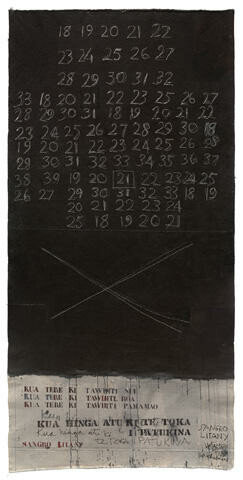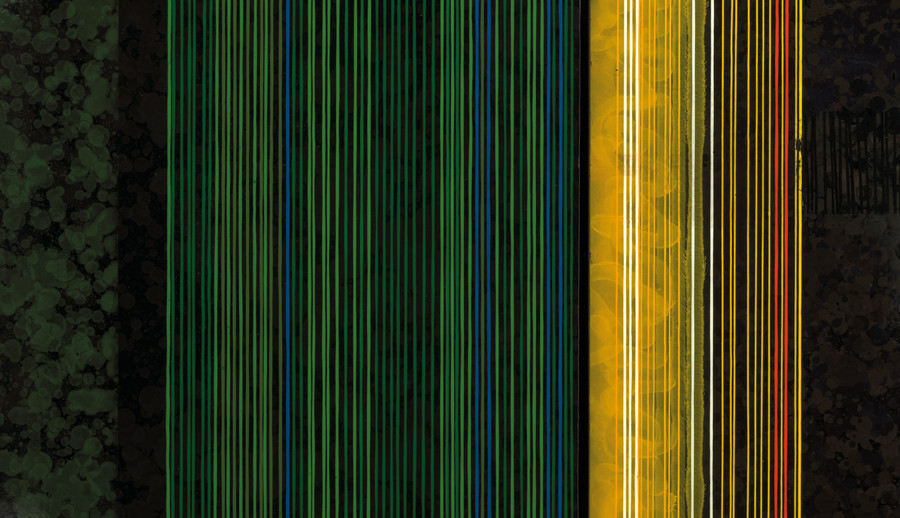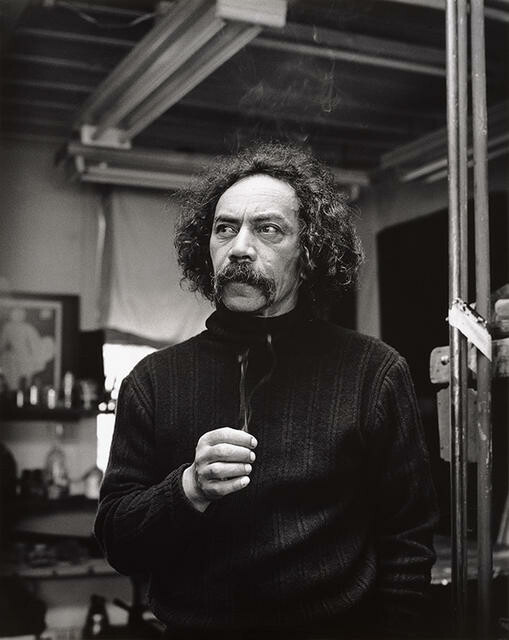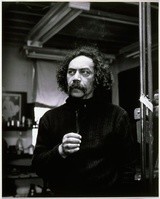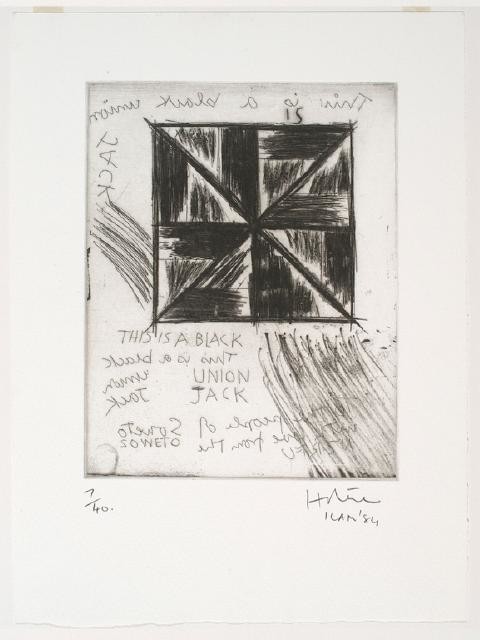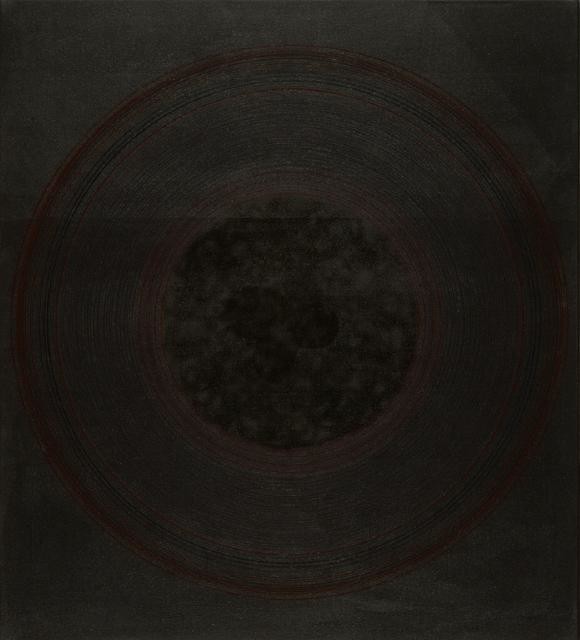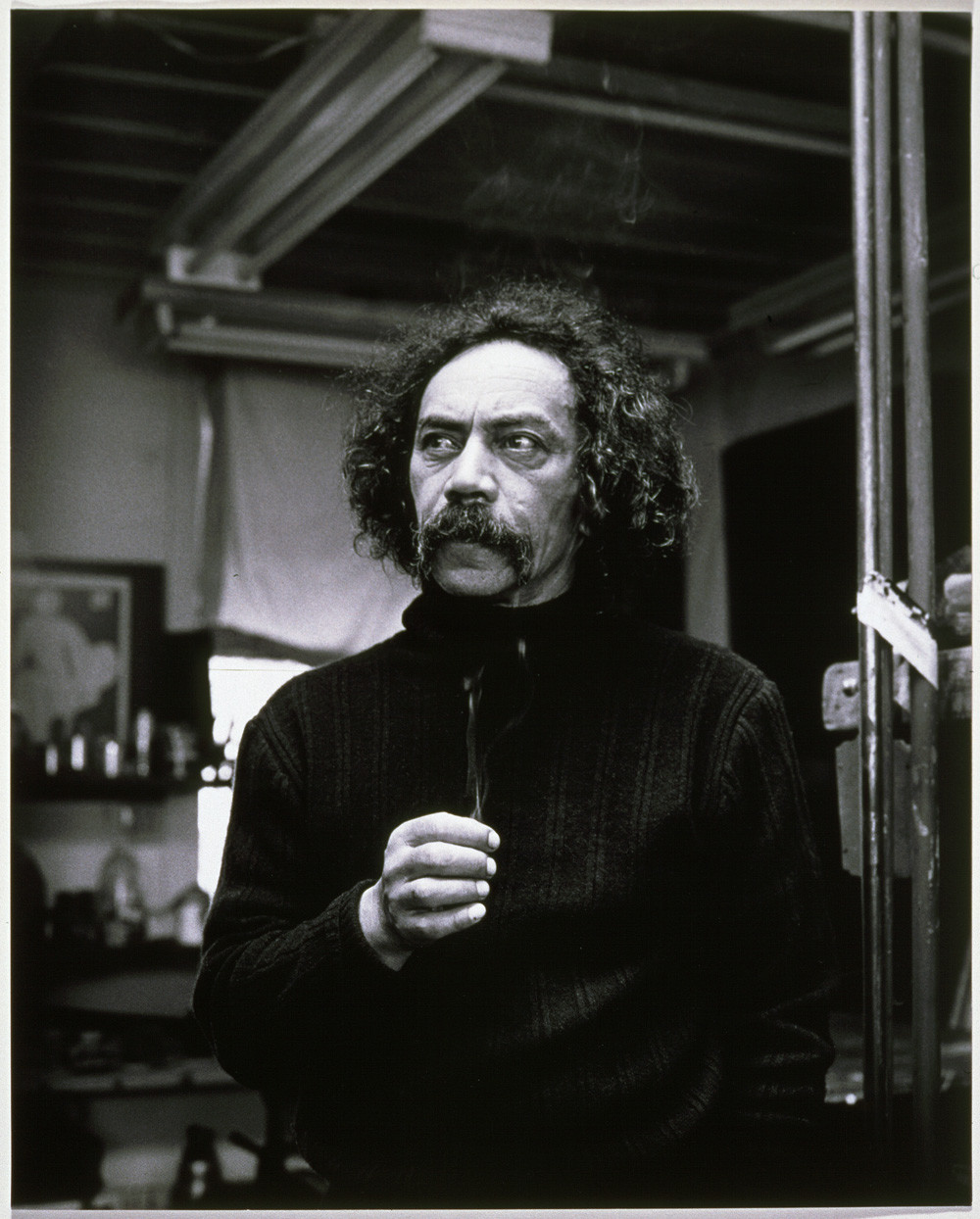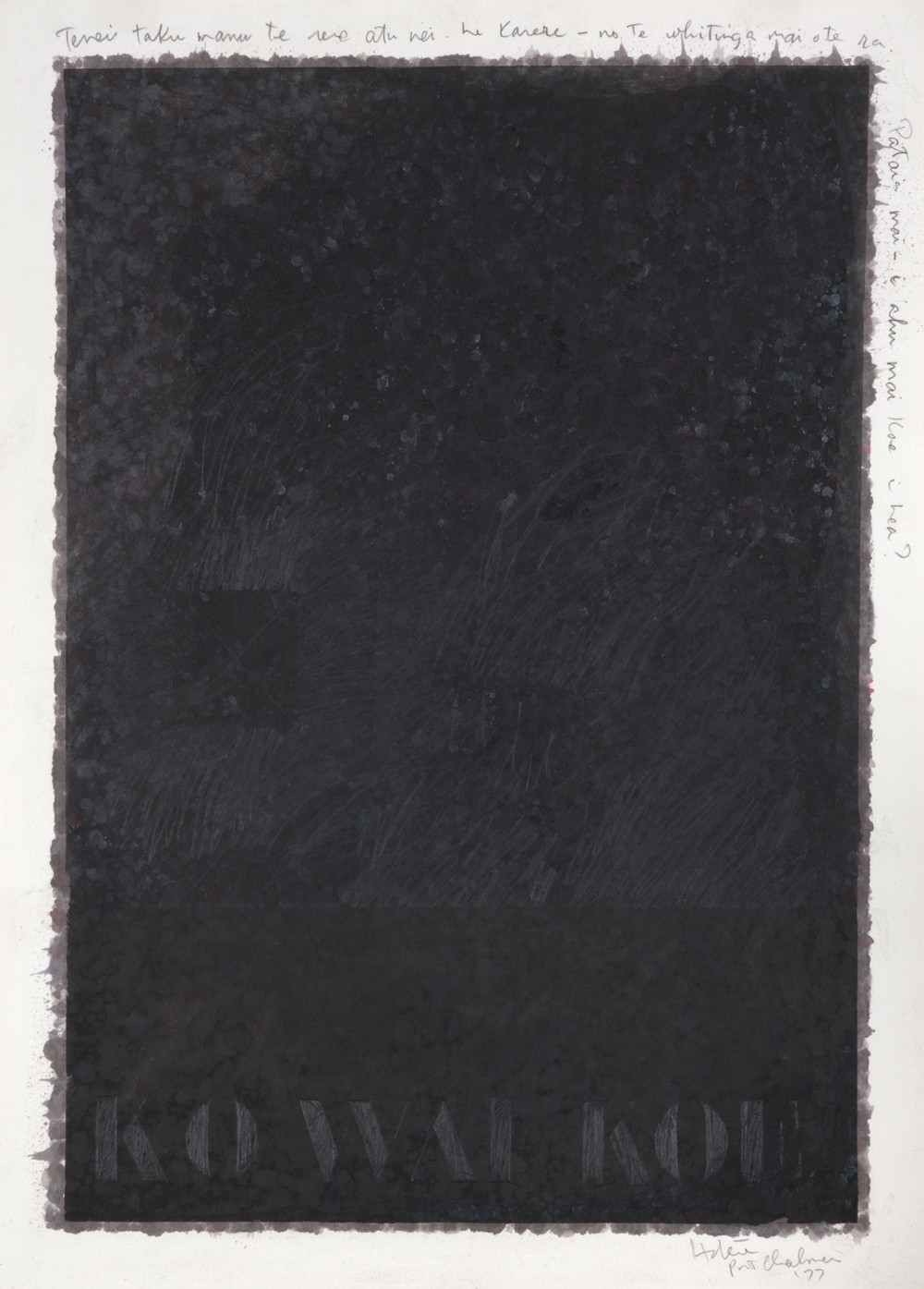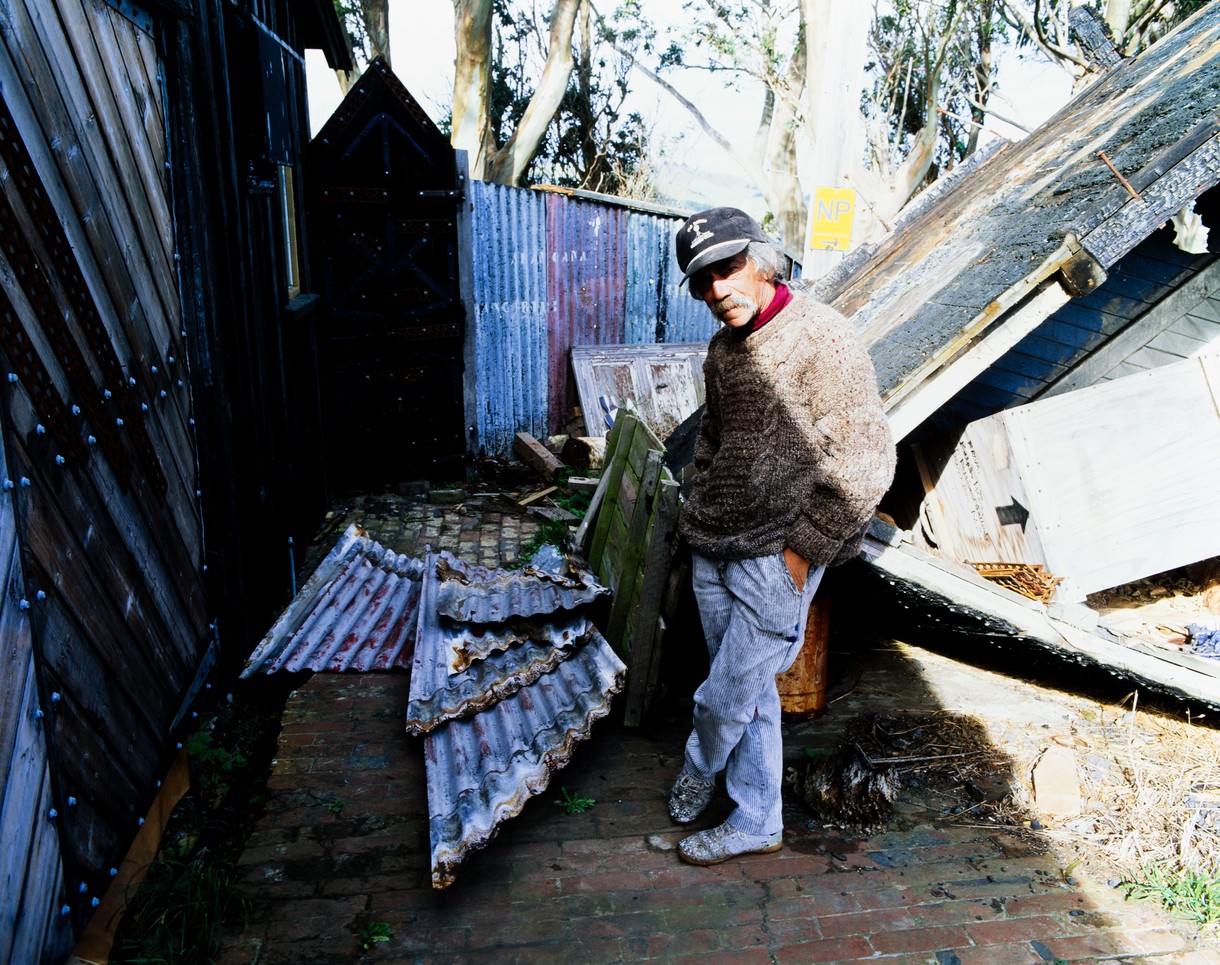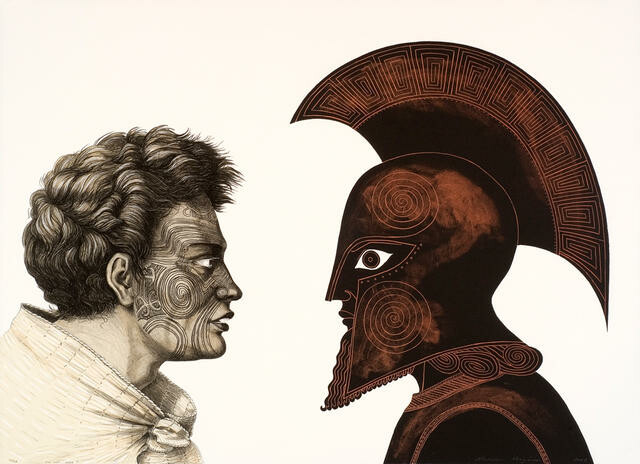B.
Sangro Litany by Ralph Hotere
Collection
The Sangro series, begun in 1962, is a memorial to Ralph Hotere's brother Jack, who fought with the Maori Battalion and whose grave lies among those of hundreds of other young soldiers at the Sangro River War Cemetery on Italy's Adriatic Coast.
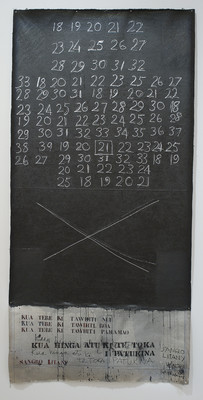
Ralph Hotere Sangro Litany 1979. Acrylic on loose canvas. Collection of Christchurch Art Gallery Te Puna o Waiwhetū, purchased 1981. Reproduced courtesy of Ralph Hotere
Along with many other members of the Maori Battalion, Jack Hotere was killed while attempting to cross the Sangro River in pursuit of retreating German forces during the Second World War.
Hotere visited the cemetery in 1963, and Sangro Litany (1979), expresses both his personal grief and a response to an immense human tragedy. The duality of light and dark, a brilliance of white colour set against a sombre landscape of black, conveys a sense of suffering and remembrance.
A formal arrangement of composition, technique and symbolism articulates a visual statement of emotional clarity.
The word "litany" suggests a religious procession or a service. Instead of listing the names of saints or martyrs, however, Hotere provides only numbers grouped in the form of a Christian cross reminiscent of one of the many tombstones at the cemetery. These white numbers, stencilled on the loose canvas, allude to the respective ages of many of the fallen and highlight their anonymous sacrifice.
The numbers float in dark space, statistical and removed, confronting us in a combination of both beauty and suggested violence. The X-shaped cross beneath can be read as an act of protest, representing anger, cancellation, error and an indictment against war.
The echo of a cross immediately behind it reinforces the sense of frustration and anguish at such loss brought about by war. The lower third of the painting is grey, and the black paint, with touches of rusty red, runs and drips down the surface like tears, blood or rain. This grey, rain-swept Sangro sky laments the dead and provides the background for the stencilled words of an ancient Maori waiata, sung to call for the return of those who have died on foreign soil.
Hasten to the great distance
Hasten to the long distance
Hasten to the far distance
They have fallen by violence
They were killed.
This invocation of numbers and words forms an abstracted landscape of human history. The elegiac use of black also connotes a sense of infinity and limitless potential, redemption and peace, order out of chaos.
Sangro Litany is one of a significant number of Hotere's works held at the Christchurch Art Gallery. Acquired over 32 years, beginning in 1969, they are an interesting commentary on the progress of one of New Zealand's most significant senior artists.
Two others begun at the same time as the Sangro series, the Polaris and Algerian series, directly protest against political issues such as the Cuban missile crisis and French opposition to Algerian independence.
Hotere was born at Mitimiti, north of the Hokianaga in 1931. He lived and worked in Europe from 1961 to 1965, this time abroad being reflected in his semi-abstract style, as is the work of international artists such as Ad Reinhardt, Barnett Newman and Russian Suprematist painter Kasimir Malevich. His paintings from this time (including the Sangro series) reveal a minimalist aesthetic.
Hotere has consistently created challenging art works, his use of language and signs allowing for multiple meanings and readings. Tension and resonance reside in the surfaces of this work, inviting the viewer to perceive and join the artist in his acknowledgment and mourning for the dead. He lives and works at Port Chalmers near Dunedin.
Jennifer Hay
